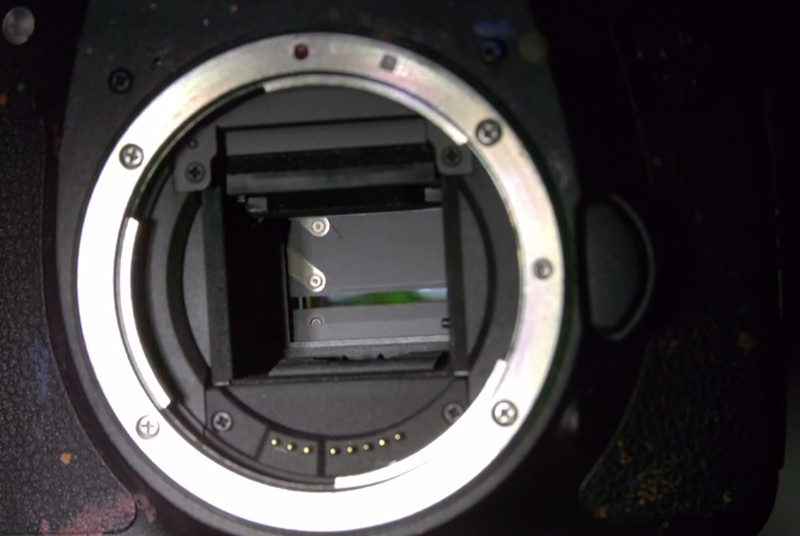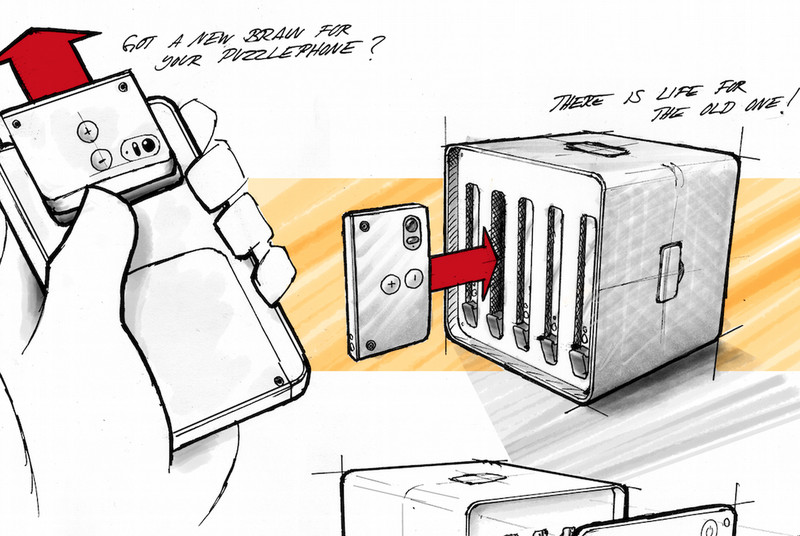// NYT > Business
The proposal would create legal authority to ensure that no content is blocked and that the Internet is not divided into pay-to-play fast lanes for Internet and media companies.
 Resisting the urge to pull out your phone in class is quite difficult for many students, apparently. There are texts to answer, emails to read, snapchats to send, and rude comments to post on Yik Yak. But two students at California State University at Chico have created something they hope will persuade students to keep their phones tucked firmly in their pockets: An app that rewards them with coupons for local businesses when they exhibit self-control and leave their phones untouched during class.
Resisting the urge to pull out your phone in class is quite difficult for many students, apparently. There are texts to answer, emails to read, snapchats to send, and rude comments to post on Yik Yak. But two students at California State University at Chico have created something they hope will persuade students to keep their phones tucked firmly in their pockets: An app that rewards them with coupons for local businesses when they exhibit self-control and leave their phones untouched during class.
Rob Richardson, a junior computer-science major, got the idea for the iPhone app, called Pocket Points, by looking around his classes and seeing what he considered to be far too many students with their heads down, paying attention to their phones rather than to the lesson taking place in front of them.
If you’re in class, it’s simple: “There should be no reason you should be on your phone,” Mr. Richardson argues. He says he realized there was a business opportunity that could also help students pay better attention.
Here’s how it works: Students acquire points—based on the length of time the phone is locked and how many people around them are also using the app—that can then be redeemed for discounts at local businesses. The app is location-based and works only on the campus. The app is being extended to other campuses as well, including a few community colleges and high schools.
Professors have been some of the app’s biggest supporters, Mr. Richardson says. Some have even expressed interest in offering rewards to their students, like extra credit or attendance points, through the app, though Mr. Richardson says such features are not currently being explored.
The app also has a leaderboard and rankings, elements incorporated to “gamify” it, says Mr. Richardson’s co-founder, Mitch Gardner, a senior business-marketing major. Some students appear to care more about those elements than the coupons.
Mr. Richardson coded the app last summer, while Mr. Gardner got local businesses on board.
Though the app is meant to help students focus on their studies, Mr. Gardner says, it was difficult to do so while they were setting up the app last semester.
“I don’t think our grades were very good,” Mr. Gardner admits with a laugh.
Both Mr. Richardson and Mr. Gardner have taken a leave of absence from Chico State this semester and are working full time in an office in Chico to further develop the software.
Right now, Pocket Points is focused on education, but its creators say it could one day move beyond that—because students aren’t the only ones addicted to their phones.

After recording the biggest quarterly profit by any company ever, Apple might have earned itself another accolade: world's largest smartphone vendor. It's clear that the iPhone maker had a bumper quarter, reporting record sales of 74.5 million smartphones. However, Samsung is only saying that it sold 95 million total handsets, of which, it says, somewhere between 71 million and 75 million (the "high 70 percent") were smartphones.
If Samsung sold more phones it would probably be keen to say so
So has Apple finally beaten Samsung? It's impossible to say with absolute certainty. Samsung isn't likely to give up any more information on the topic, and analysts and industry experts are hedging their bets accordingly. Some are marking it as a d...

The "D" in DSLR does not stand for dark magic. In fact, that snap of the shutter you hear when taking a picture is a wonderful symphony of mechanical engineering at work, and happens so fast that you can't really enjoy it all with the naked eye. Luckily, the Slow Mo Guys have painstakingly chronicled what's happening with the mechanical shutter of a Canon 7D using a very fast (and expensive) Phantom Flex camera, recording various shutter speeds at a mind-boggling 10,000 frames per second.
According to a report from The Wall Street Journal, Microsoft will be investing in Cyanogen, Inc., the Android ROM builder. The report says that Microsoft would be a "minority investor" in a $70 million round of financing that values Cyanogen in the "high hundreds of millions."
Cyanogen takes the Android source code and modifies it, adding more features and porting it to other devices. It has also started supplying Android builds directly to OEMs (like the OnePlus One), which ship the software on devices instead of stock Android. Last week during a talk in San Francisco, Cyanogen's CEO said the company's goal was to "take Android away from Google." It wants to replace the Google Play ecosystem with apps of its own, the same way that Amazon uses the Android Open Source Project for its Kindle Fire products but adds its own app and content stores.
Google pushes a lot of requirements on Android OEMs. If they want the Google Play Store, it also forces them to take all other Google products and services. There is also an "anti-fragmentation clause," which forbids OEMs from selling Android devices without Google Play. Cyanogen's Android distributions wouldn't have any such limitations, but then neither would a self-made AOSP build.
Apple's earnings report for the first quarter of fiscal 2015 is here, and as usual the numbers for the holiday quarter are looking pretty good. iPhone sales are way up, and account for over two-thirds of Apple's revenue. Macs continue their more modest but still impressive growth, while iPads have seen their sharpest year-over-year decline.
Let's get the numbers out of the way first. Apple broke quarterly records with $18 billion in profit and $74.6 billion in revenue, compared to $13.1 billion in profit and $57.6 billion in revenue in Q1 of 2014. It maintained a healthy profit margin of 39.9 percent. These results firmly beat Apple's guidance for the quarter, which predicted revenue between $63.5 billion and $66.5 billion and profit margins between 37.5 and 38.5 percent.
Apple managed to increase revenues across the board in all territories, and the Americas continue to account for the bulk of that revenue. However, China is clearly Apple's fastest growing market—revenue increased from $9.5 billion to $16.14 billion, a year-over-year increase of nearly 70 percent. Apple's deals with Chinese carriers and increasing focus on the Chinese market appear to be paying off.
Apple CEO Tim Cook dropped a rare bit of product news on the company's Q1 2015 earnings call: the Apple Watch begins shipping in April.
The Apple Watch will start at $349 for the aluminum Apple Watch Sport model, though starting prices for the more expensive stainless steel and gold models haven't yet been revealed. To use the watches, you'll need an iPhone 5, 5C, 5S, 6, or 6 Plus, and the watch's NFC chip will enable Apple Pay support for the phones that don't support it natively.
A new update to iOS, version 8.2, will also be required to use the watch—it's currently in its fourth developer beta. Some of those betas have already outed some Apple Watch features, and like Android Wear it looks like the watch relies on your phone for the majority of its functionality.
|
Ashley Friedman Candidate for MBA, Class of 2016 Duke University, The Fuqua School of Business Tel +1.303.903.6071 ashley.friedman@duke.edu |

One of the selling points for modular smartphones like Project Ara or the Puzzlephone is that they reduce waste. But little has been said about how discarded modules could be put to use. Finland's Circular Devices, the company developing the Puzzlephone, has now revealed its answer to that question: it's called the Puzzlecluster, and it's a scalable supercomputer.
Reuse and reduce
The concept is pretty simple: when a Puzzlephone owner inevitably decides to upgrade their modular phone's "brain" (read: processor unit), the old module can be repurposed to power a versatile computer. With many different outdated smartphone CPUs combined, the cluster should have enough processing power to make the Puzzlecluster a useful addition to...
In September, Panasonic made waves at Photokina by using a camera show to announce a smartphone. But the Lumix CM1 isn’t just any smartphone: it has a 1-inch sensor, the kind you’d find in high-end point-and-shoot cameras, plus an f/2.8 Leica lens that you’d be lucky to find on a high-end point-and-shoot. Along with a 20-megapixel sensor, this phone is designed to basically reinvent the wheel when it comes to smartphone cameras.
It also has a 4.7-inch, 1080p display, a Snapdragon processor, Android 4.4, and 2GB of RAM. We liked it a lot at Photokina: it’s fast, full of useful camera software, and surprisingly manageable in size given what’s inside.
This is the kind of phone that never comes to America, the spec monster that...